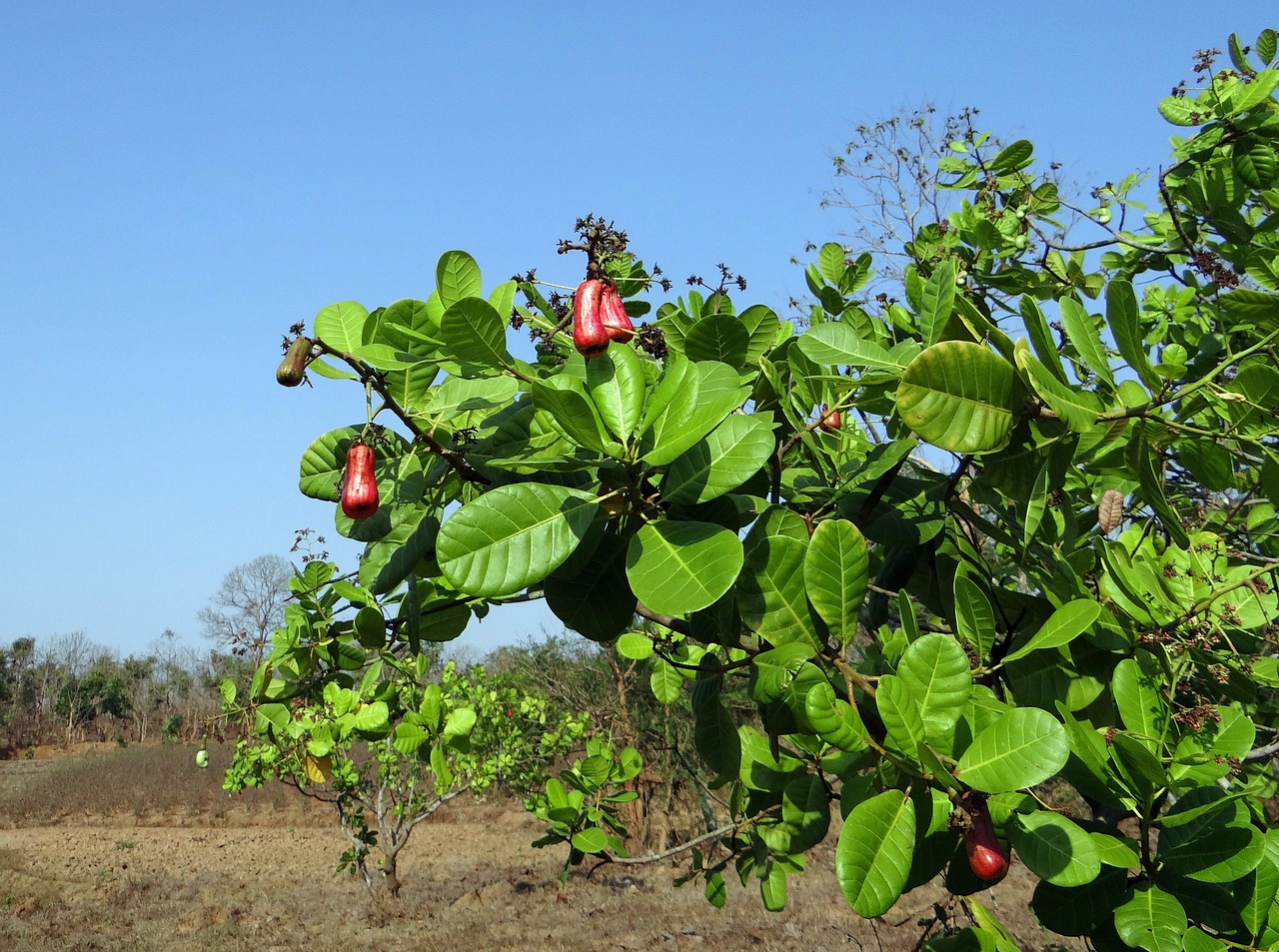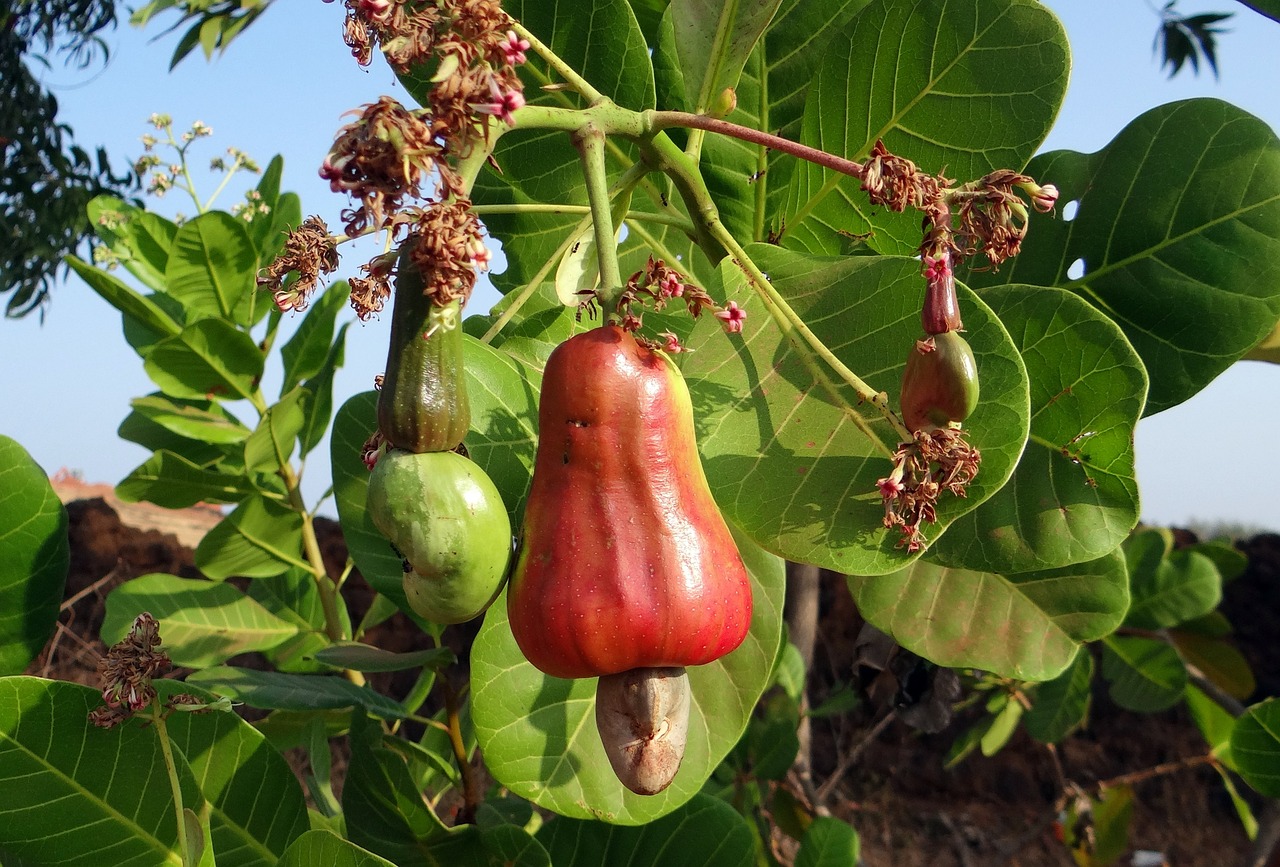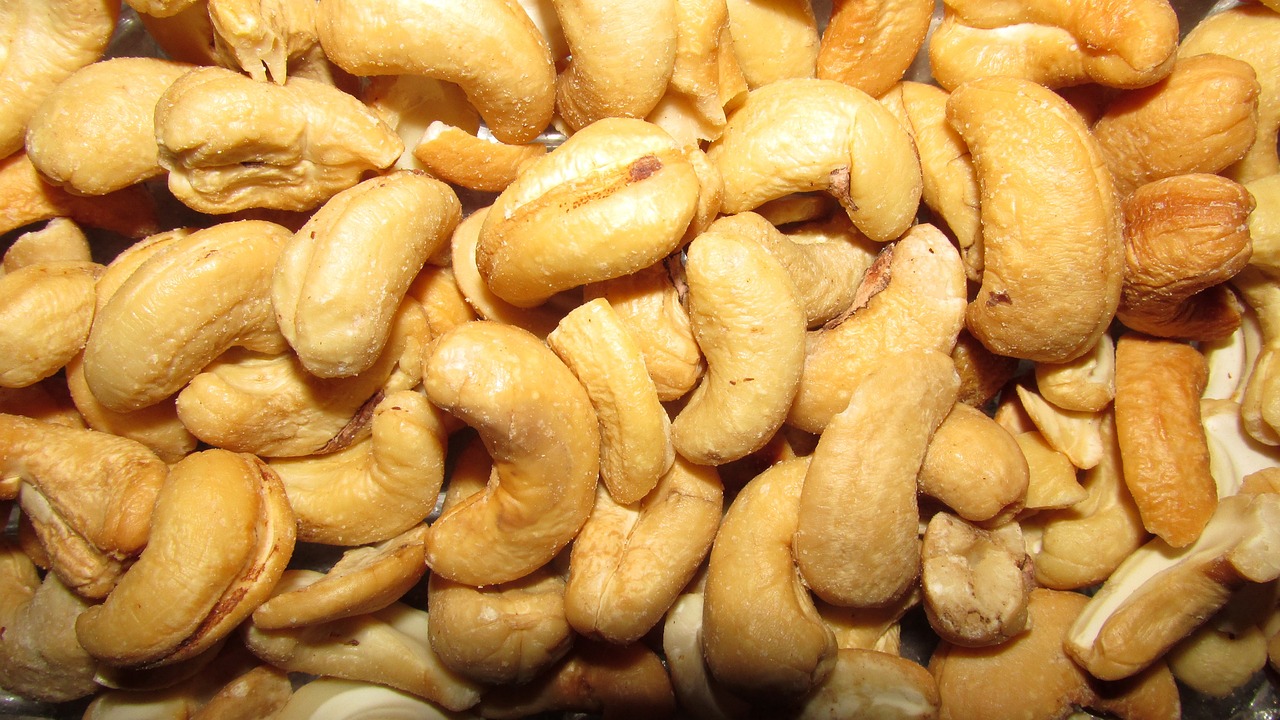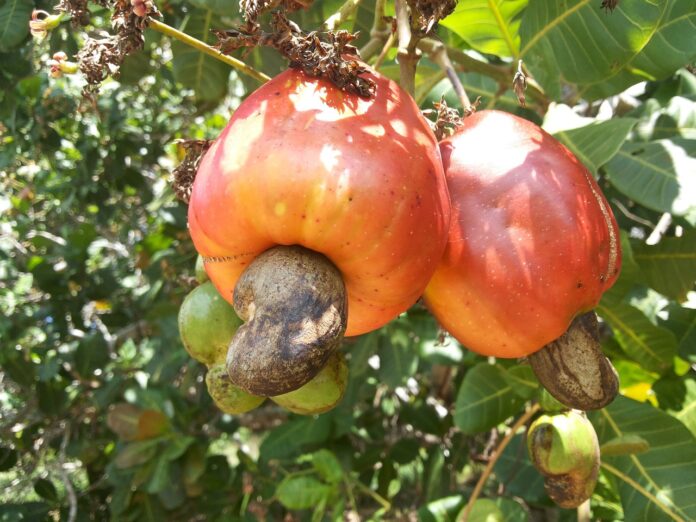Among nuts, cashews are an unusual plant and more than just a nut. Everything produced by the cashew tree is used by humans. The bark and leaves are used for medicinal purposes, the shells of the nuts in industrial applications, and the cashew nuts and apples in culinary uses.
The cashew tree is believed to originate from eastern Brazil. It is grown in India, Africa, Southeast Asia, Iran, and Azerbaijan.
In the Ticuna language (an indigenous tribe), cashew is called acaju (meaning “yellow fruit”), from which the Portuguese name caju or cajueiro is derived, eventually forming the name cashew (in English, cashew).
Cashew is an evergreen, warm-loving tree with a thick, gnarled trunk and sprawling branches. It can reach up to 15 meters in height. For example, in Angola, there is a 50-year-old tree that is 30 meters tall and produces up to 60 kilograms of nuts per year.
The cashew fruit consists of two parts: the cashew apple and the nut. The cashew apple is a large swollen peduncle, pear-shaped, and can be yellow, orange, or red, 7-10 cm long and about 5 cm in diameter. It is a fleshy, very juicy fruit with a sweet-sour taste. On top of such an apple is a nut in a hard shell, which turns dark green, almost brown, as it matures.
Cashew apples spoil quickly and are not suitable for transportation. The fruit is used to make juice, jams, jellies, compotes, and alcoholic beverages. The juice is very popular in Latin America.
Ripe cashew fruits are consumed fresh, but dealing with cashew nuts is not as simple.
Between the shell and the coating, which hides the nut, there is a poisonous substance called cardol (a toxic oily substance) that causes burns on contact with the skin (forming blisters), as well as anacardic acid, which causes an allergic skin rash upon contact. The nuts are processed manually.
The nuts are carefully extracted from the shell and coating, then undergo special thermal treatment to completely evaporate harmful substances.
These toxic substances have found applications in industry and medicine.
Uses of Cashew Around the World
In Africa, cashews are used for tattooing. In Brazil, cashews are considered an aphrodisiac and a remedy for asthma, bronchitis, flu, stomach disorders, and diabetes.
In Haiti, they are used for toothaches and warts. In Mexico, they are used to bleach freckles. In Panama, they treat hypertension. In Peru, they are used as an antiseptic. In Venezuela, they treat throat inflammation.
Cashews are very popular in Asian and Indian cuisines.
Beneficial Properties of Cashew
Cashews have beneficial properties such as antibacterial, antidysenteric, antimicrobial, antiseptic, and tonic effects.
The nuts are rich in protein and carbohydrates, vitamin A, B2, B1, iron, zinc, phosphorus, calcium, copper, and magnesium.
The vitamins in cashews help with protein and fatty acid metabolism in the body, lower blood cholesterol levels, strengthen the immune system, and normalize cardiovascular system functions.
Due to the presence of copper and magnesium, the nuts increase bone strength and prevent the development of osteoporosis.
As an auxiliary remedy, they are consumed for toothaches, psoriasis, dystrophy, metabolic disorders, and anemia.
Cashews do not contain a large amount of fat, unlike almonds, walnuts, and peanuts.
Harm and Contraindications
Despite the benefits of cashews, there are contraindications to their consumption. Cashew intake is limited in the following cases:
- Kidney or bladder stones
- Pancreatitis
- Stomach ulcers
- Obesity
- Migraines
- Predisposition to allergic reactions
How to Choose and Store Cashews
When choosing cashews, it is best to prefer whole, light-colored kernels that are firm and crunchy. The nuts should not be overdried.
If a bitter taste is detected when tasting cashews, they should be discarded as they have gone rancid.
Cashew kernels can be stored in a dry place at room temperature for up to 30 days. In the refrigerator, they can last up to 2 months.
